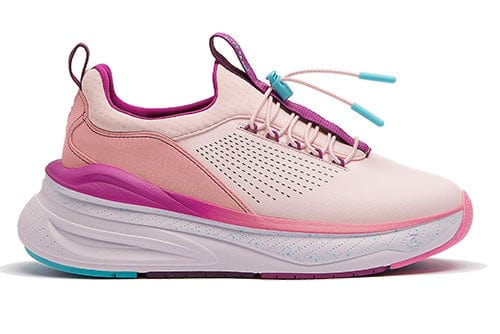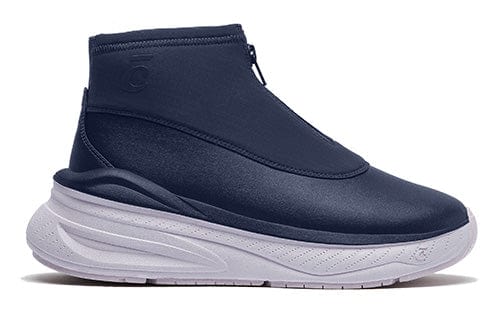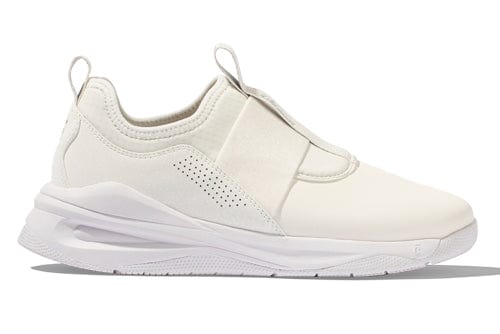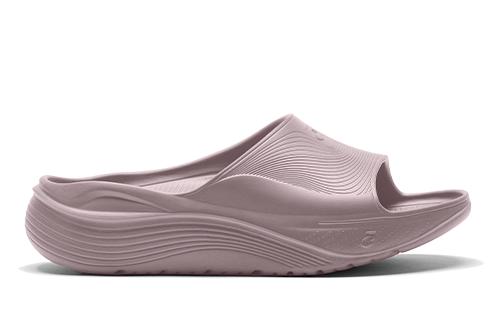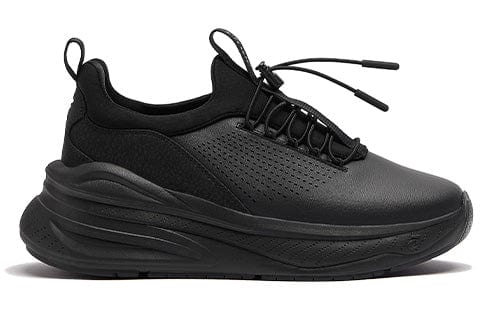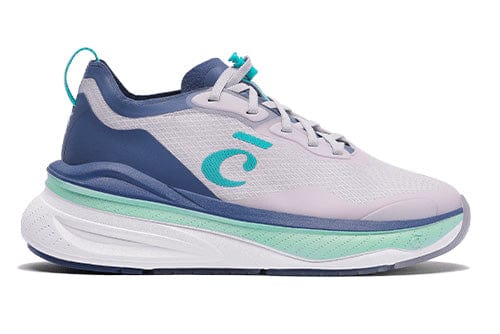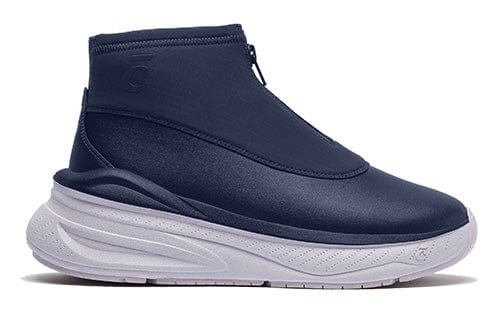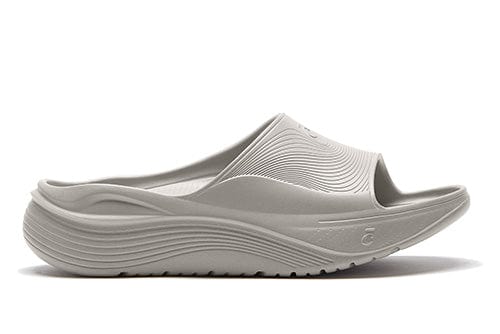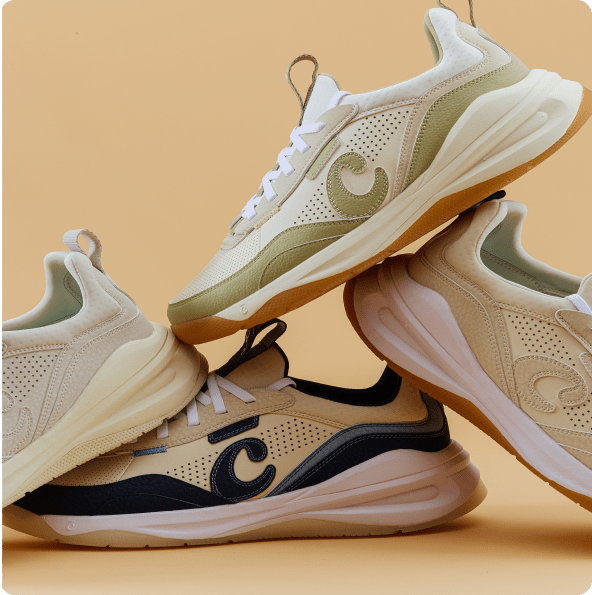Effects of Standing Too Long On Your Feet
Standing is a part of life—whether you're behind the counter, in front of a classroom, on the hospital floor, or managing a busy kitchen. But while it might seem harmless at first, standing for hours on end can take a serious toll on your body. If you've ever ended your day with aching legs, tight calves, or sore arches, you're not alone.
So, what are the symptoms of standing too long? Let’s explore the science, the signs, and the steps you can take to protect your health and comfort while working on your feet.
What Happens to Your Body When You Stand Too Long?
On the surface, standing might feel easier than running around—but prolonged standing quietly strains your entire body. It’s not about the intensity of the activity, but about the static posture you’re holding for hours at a time.
When you stay in a standing position too long, your muscles remain contracted, especially those in your legs, feet, and back. This constant tension reduces blood circulation, making it harder for oxygen and nutrients to reach those tired muscles. The result? Fatigue, swelling, and discomfort start creeping in.1
Understanding the Health Effects
- Circulation Slows Down: Standing for long periods causes blood to pool in your lower extremities. This can lead to swelling in the feet and ankles, varicose veins, and even an increased risk of cardiovascular issues.
- Muscles Work Overtime: Your calves, thighs, and lower back muscles are forced to remain engaged to keep you upright. Over time, this leads to tightness, strain, and eventual musculoskeletal issues.
- Joints Take the Pressure: Your knees, hips, and ankles bear your full body weight without the relief that sitting provides. This repetitive load causes joint pain, stiffness, and increased risk of injury.
Symptoms of Standing Too Long
The symptoms of standing too long don’t always show up immediately. For many workers, the discomfort builds over time and becomes a regular part of their routine—until it becomes impossible to ignore.
Here are some symptoms of standing too long to watch out for:
- Foot Pain and Swelling: One of the most common issues for workers is aching feet from standing all day. This includes soreness in the arches, heels, and balls of the feet.
- Lower Back Pain: Your spine constantly holds you up, so your lower back may ache or tighten after prolonged standing. Over time, this could even lead to spinal misalignment or chronic pain.
- Varicose Veins: Standing long periods can damage your veins and valves, leading to visible varicose veins and circulation issues.2
- Joint Stiffness and Leg Fatigue: Tired legs, stiff knees, and achy joints are all red flags that you’re spending too much time upright without movement or rest.
These are just some of the symptoms of standing too long that many workers experience without realizing the long-term health risks involved.
Job Demographics and Risks
Not everyone faces the same challenges when it comes to prolonged standing. Some jobs demand it day in and day out, and certain groups—like women and older workers—may be more prone to the physical effects of standing work. Knowing who’s most at risk can help prioritize preventive measures and support overall workplace well-being.
Here are the roles and populations most affected by prolonged standing:
- Healthcare professionals: Nurses, techs, and doctors often stand for long hours with minimal breaks, leading to fatigue, muscle strain, and lower leg discomfort.
- Retail and hospitality workers: Long shifts on hard floors increase the risk of foot pain, swelling, and discomfort, especially without supportive footwear.
- Factory, warehouse, and assembly line jobs: These roles involve little movement and static standing positions, which can hinder blood flow and contribute to chronic pain and joint problems.
- Women: Due to anatomical differences and footwear choices, women are more likely to experience pain and vein-related issues from working standing roles.
- Older workers: Age-related changes in joints, circulation, and muscles can make it harder to recover from the stress of prolonged standing work and increase susceptibility to injury.
In all of these cases, adding movement—like short walks or exercises during breaks—can ease tension, keep blood circulating, and reduce the risk of long-term health effects.
How Supportive Footwear Can Help Reduce Discomfort
The good news? One of the easiest ways to reduce pain standing all day is to invest in proper footwear. Shoes aren’t just accessories—they’re tools to support your entire body.
When you’re spending long hours upright, your footwear needs to absorb impact, support your arches, and encourage good posture from the ground up. Without these features, you’re far more likely to suffer from pain, fatigue, and injury.
Why Clove Sneakers Are a Smart Solution:
Clove sneakers are designed for professionals who are always on their feet—nurses, baristas, teachers, veterinary techs, and retail workers alike.
- Cushioned Insoles: The memory foam insoles reduce pressure and impact on your feet, ankles, and knees.
- Slip-Resistant Outsoles: Whether you’re working on tile, concrete, or hardwood, Clove sneakers provide the traction you need to stay safe and steady.
- Breathable, Easy-to-Clean Materials: When you’re working long hours, spills and sweat are inevitable. These sneakers are designed to handle it all while keeping you comfortable.
Pair your Clove sneakers with compression socks or switch into recovery slides after a long shift to relieve foot pain from standing all day and give your body a much-needed break.
Preventative Measures to Avoid the Negative Effects of Prolonged Standing
Want to know how to stand for long periods of time without hurting yourself? It’s all about prevention, preparation, and smart habits.
1. Practice Good Posture
Don’t lock your knees or hunch your shoulders. Stand tall with your weight evenly distributed across both feet. Engaging your core muscles helps support your lower back and reduce spinal strain.
2. Incorporate Movement Breaks
Standing in place too long is just as bad as sitting for too long. Try to shift your weight, march in place, or do calf raises every 30 minutes to encourage blood flow.
3. Stretch Regularly
Take a few moments during your shift to stretch your calves, hamstrings, back, and toes. Stretching is so important – even small movements can help reduce stiffness and increase circulation. You can also try quick stretches during breaks or while waiting at your workstation.
4. Use Ergonomic Tools
Anti-fatigue mats are a great addition to standing workstations. These soft, cushioned mats absorb shock and reduce pressure on your joints. Likewise, adjustable workstations that allow you to alternate between sitting and standing can make a world of difference.
5. Prioritize Recovery
How do you relieve foot pain from standing all day? After work, give your body the rest it deserves. Elevate your feet, apply ice if needed, and rest your muscles to help your body bounce back faster.
The Smarter Way to Stand All Day
So, is standing all day bad for you?
In short—it can be. While standing has its benefits over sitting, standing all day without movement, support, or breaks places serious stress on your body. From aching feet to long-term joint damage, the effects of prolonged standing shouldn’t be ignored.
By recognizing the standing too long symptoms, choosing the right shoes, and building healthy habits, you can turn your standing hours into something your body can actually handle—without the pain.
Looking for relief? Explore Clove’s newest releases designed for professionals who spend all day on their feet. Whether you’re dealing with aching feet from standing all day or simply want more support at work, Clove is here to help.
Sources:
- Canadian Centre for Occupational Health and Safety. Working in a Standing Position. https://www.ccohs.ca/oshanswers/ergonomics/standing/standing_basic.html
- Cleveland Clinic. Varicose Veins. https://my.clevelandclinic.org/health/diseases/4722-varicose-veins




